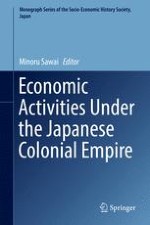2016 | OriginalPaper | Buchkapitel
3. The Shifting Axis of Specialization Within the Japanese Empire: A Study of Railway Distribution of Cereals in Colonial Korea
verfasst von : Yusuke Takeuchi
Erschienen in: Economic Activities Under the Japanese Colonial Empire
Verlag: Springer Japan
Aktivieren Sie unsere intelligente Suche, um passende Fachinhalte oder Patente zu finden.
Wählen Sie Textabschnitte aus um mit Künstlicher Intelligenz passenden Patente zu finden. powered by
Markieren Sie Textabschnitte, um KI-gestützt weitere passende Inhalte zu finden. powered by
